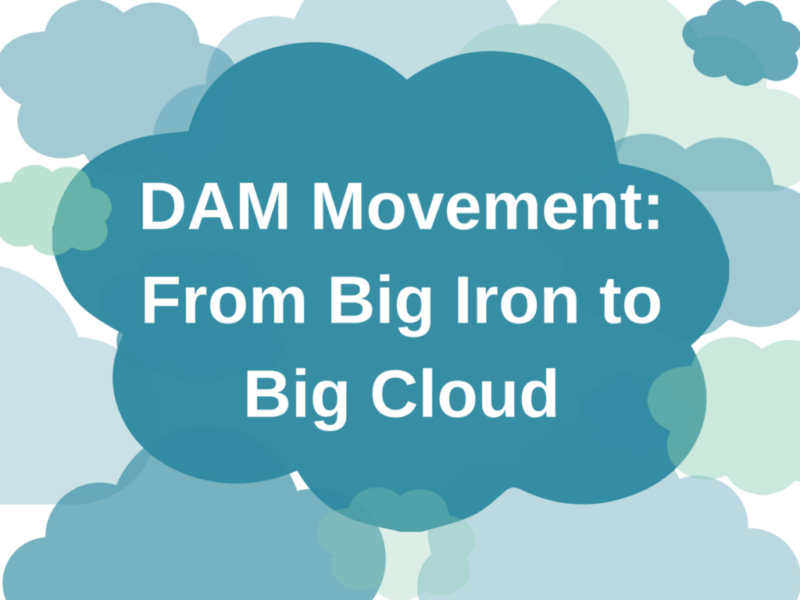This post was originally published in CMS Wire. Peter Krogh is a photographer, the author of The DAM Book (O’Reilly) and the product architect for Libris.
One of the biggest trends to hit the technology world in the last few years is the rise of cloud-based services. And Digital Asset Management (DAM) is no exception.
On the one level, this is simply a nod to the efficiencies that cloud services claim compared to self-hosted solutions. On a deeper level, the trend toward cloud solutions is inherent in the nature of a connected media ecosystem. Increasingly, the value in our media comes from connectivity, and DAM has to be cloud-native in order to work effectively as a connected system. The administrators who deal in the cloud solutions area may want to see how the Microsoft az104 exam can help with implementing, managing, and monitoring the environment to make sure it is working smoothly throughout the business.
Big Iron Used To Rule
The original DAM systems were almost all self-hosted. The only way to get adequate storage was to buy it, install it, and maintain it yourself. (By that, of course, I mean your IT department). And the DAM software running the system caused problems. Most of the difficulties of these systems are well-known – cost, implementation time, out of the box limitations, maintenance and challenges when upgrading.
Faster, Cheaper, Better
Cloud services changed the paradigm. A cloud DAM can be set up in minutes or hours, and stakeholders can start being productive in a matter of days. There’s no long lead time, hardware to purchase, or software to install and configure. Simple cloud systems like Dropbox and Slack can allow effortless sharing that almost feels invisible (yes, I’m arguing that those systems are simple DAM systems). And even the more complex and configurable systems can be set up in a fraction of the time – and at a fraction of the cost – of self-hosted systems.
The advantages of fast and inexpensive implementation are easy to see. But this is about more than cost savings. Connectivity adds a layer of value to your media in a number of ways. And the best connectivity will be found in cloud-native applications. Upgrades can happen seamlessly in the background. Security is monitored by a dedicated team that only the largest companies can afford. Cloud systems are born connected.
Connected Objects
Increasingly, the value of photo or video is much deeper than the media as a simple marketing visual. Photos and videos can provide data that can be used in marketing and other value-adds.
An image published on social media is more than just the pixels in the rectangle. It also represents the identity of the person who uploaded, and all the comments and likes represent another level of connectivity, meaning and value. Of course, extracting that information from social media is regulated by the policies of the application. The best way to extract this valuable data is to host the visual assets on your system, where you own the data and relationships.
Embedded Objects
Embedded images and video contain a wealth of connectivity and a flow of information that marketers can now take greater advantage of. Marketers can glean where embedded media has been seen, by how many people, and even something about the person viewing it.
The embedding itself can create a new channel for communication. If there is a live link between the media host and the embedded object, ads can be served that relate to the subject matter of the photo or video. Right now, this is typically found in large services like Getty and YouTube, but we’ll see more of this trickling down to systems that can host an individual company’s media.
Linked Data
One of the great advantages we’re starting to see is the ability to connect media to other types of data. Location and date tags in an image provide a wealth of information about the subject. Services like Wolfram Alpha offer a deep understanding of the meaning of an image through image recognition and metadata parsing. A photo of African Violets can be linked to botanical information, retail information, or even art and literature.
The API-fication of Everything
The revolution in linked data and image recognition is being fueled by simple and secure connectivity provided by API (Application Programming Interface). APIs allow one device, service or software package to talk to another one and send data back and forth. Most of the seamless connectivity we experience daily is built on API interchange. And this is growing at an explosive pace. Keywording services can connect by API and allow your staff to spend more time getting value from the images instead of tedious data entry.
Some of what I’ve outlined here is easily available today in cloud DAM systems for marketers. Some of it is bleeding edge stuff, and some of it is still in the lab. But make no mistake, connectivity in media usage is going to be part of the visual communication revolution. And at the core will be cloud services to host and serve the media.




